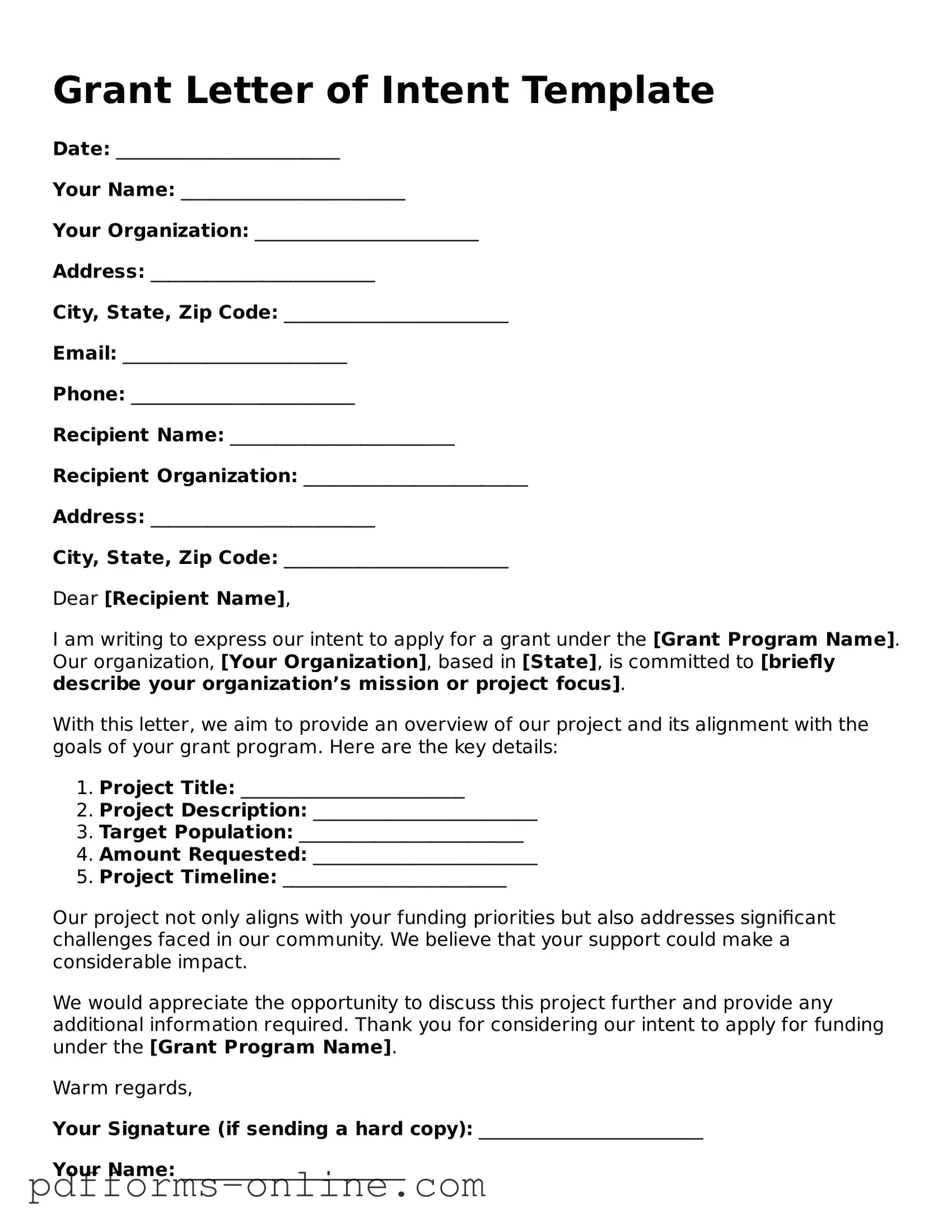Grant Letter of Intent Template
Date: ________________________
Your Name: ________________________
Your Organization: ________________________
Address: ________________________
City, State, Zip Code: ________________________
Email: ________________________
Phone: ________________________
Recipient Name: ________________________
Recipient Organization: ________________________
Address: ________________________
City, State, Zip Code: ________________________
Dear [Recipient Name],
I am writing to express our intent to apply for a grant under the [Grant Program Name]. Our organization, [Your Organization], based in [State], is committed to [briefly describe your organization’s mission or project focus].
With this letter, we aim to provide an overview of our project and its alignment with the goals of your grant program. Here are the key details:
- Project Title: ________________________
- Project Description: ________________________
- Target Population: ________________________
- Amount Requested: ________________________
- Project Timeline: ________________________
Our project not only aligns with your funding priorities but also addresses significant challenges faced in our community. We believe that your support could make a considerable impact.
We would appreciate the opportunity to discuss this project further and provide any additional information required. Thank you for considering our intent to apply for funding under the [Grant Program Name].
Warm regards,
Your Signature (if sending a hard copy): ________________________
Your Name: ________________________
Your Title: ________________________
Your Organization: ________________________
